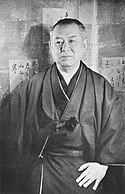Junichiro Tanizaki Quote
People called Mother a beauty, when she was young. I remember her very well in those days—until I was fourteen or fifteen she was as beautiful as ever. When I compare that memory of her with Satsuko, the contrast is really striking. Satsuko is also called a beauty. That was the main reason why Jokichi married her. But between these two beauties, between the 1890’s and now, what a change has taken place in the physical appearance of the Japanese woman! For example, Mother’s feet were beautiful too, but Satsuko’s have an altogether different kind of beauty. They hardly seem to belong to a woman of the same race. Mother had dainty feet, small enough to nestle in the palm of my hand, and as she tripped along in her straw sandals she took extremely short, mincing steps with her toes turned in. (I am reminded that in my dream Mother’s feet were bare except for her sandals, even though she was dressed to go visiting. Perhaps she was deliberately showing off her feet to me.) All Meiji women had that pigeon-like walk, not just beauties. As for Satsuko’s feet, they are elegantly long and slender; she boasts that ordinary Japanese shoes are too wide for her. On the contrary, my mother’s feet were fairly broad, rather like those of the Bodhisattva of Mercy in the Sangatstudo in Nara. Also, the women of their day were short in stature. Women under five feet were not uncommon. Having been born in the Meiji era, I am only about five feet two myself, but Satsuko is an inch and a half taller.
People called Mother a beauty, when she was young. I remember her very well in those days—until I was fourteen or fifteen she was as beautiful as ever. When I compare that memory of her with Satsuko, the contrast is really striking. Satsuko is also called a beauty. That was the main reason why Jokichi married her. But between these two beauties, between the 1890’s and now, what a change has taken place in the physical appearance of the Japanese woman! For example, Mother’s feet were beautiful too, but Satsuko’s have an altogether different kind of beauty. They hardly seem to belong to a woman of the same race. Mother had dainty feet, small enough to nestle in the palm of my hand, and as she tripped along in her straw sandals she took extremely short, mincing steps with her toes turned in. (I am reminded that in my dream Mother’s feet were bare except for her sandals, even though she was dressed to go visiting. Perhaps she was deliberately showing off her feet to me.) All Meiji women had that pigeon-like walk, not just beauties. As for Satsuko’s feet, they are elegantly long and slender; she boasts that ordinary Japanese shoes are too wide for her. On the contrary, my mother’s feet were fairly broad, rather like those of the Bodhisattva of Mercy in the Sangatstudo in Nara. Also, the women of their day were short in stature. Women under five feet were not uncommon. Having been born in the Meiji era, I am only about five feet two myself, but Satsuko is an inch and a half taller.
Related Quotes
About Junichiro Tanizaki
He was one of six authors on the final shortlist for the Nobel Prize in Literature in 1964, the year before his death.
